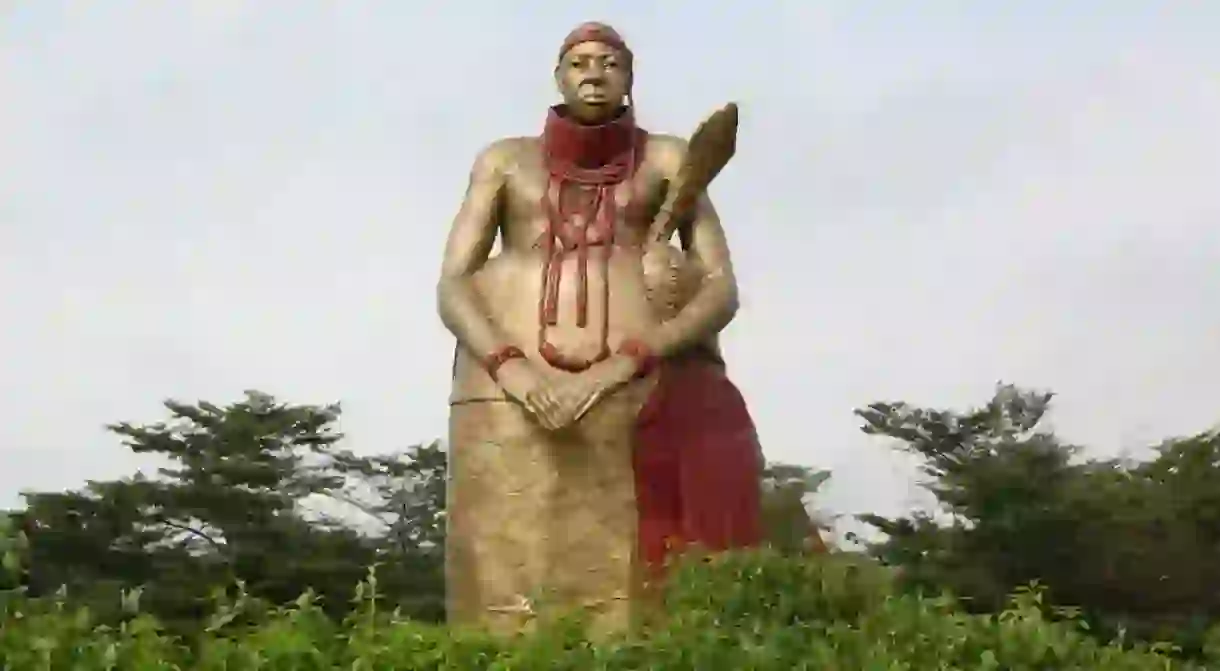The Best Things to Do in Benin City, Nigeria

Benin City is the capital of Edo State in southern Nigeria. It is approximately 40 km (25 miles) north of the Benin River. Formerly known as Benin Kingdom, the city is one of the most ancient in the whole of Africa, standing partly as the remains of what was once a powerful and famous African Empire during the 15th and 16th centuries. From its rich cultural attractions and traditions to its colorful festivals and world-renowned art, here are the best things to see and do when in town.
The Royal Palace of the Oba of Benin
Monastery
The palace which was declared a UNESCO Listed Heritage Site in 1999 is an architectural wonder which still marvels tourists till date. The Oba of Benin is the traditional ruler of the Edo people, his palace is a sacred cultural significance to the people. The palace which is centrally situated at the heart of the city, was erected by the Oba Ewedo (1255AD – 1280AD). It was later rebuilt by Oba Eweka II (1914 – 1932) after the 1897 war. The palace comes with dos and donts as regards to traditions – one of the restrictions includes no wearing of black clothing, the Oba is seen as a deity who has no reason to mourn – black represents mourning, therefore the Oba must not associate with it. Others include whistling which is seen as summoning evil spirits, no carrying of palm kernel or oil, pointing at the Oba or his chiefs, no dogs allowed due to sacrificial reasons and many others. A tour guide will come in very handy.
Benin City National Museum
Museum

Okomu National Park
Park
Okomu National Park is the smallest of the forest reserves in Nigeria, the forest block that covers 1,082 square kilometers. The park holds a remnant of the Nigerian lowland forests that once formed a continuous 50–100 km wide belt from the Niger River west to the Dahomey Gap in Benin. Home to buffaloes, red river hogs, chimpanzees, leopards, bush baby, putty nosed guenon, porcupine, pangolins, duikers, antelopes – it is also a sanctuary for the white throated monkey, one of the rarest in the world. Bird watchers and butterfly lovers will find this a magical place.
Igun Street
Market
Igun-Eronmwon quarters also known as Igun Street Benin City is listed as a Cultural Heritage Site by UNESCO, It is now one of Benin’s most visited tourist attractions. The quarters is home of the brass/bronze casting industries in Benin. It displays one of the 31 guilds of the Oba of Benin of the ancient Benin kingdom. There are local traders who sell souvenirs and trinkets of rich cultural significance, make sure to get one!
Somorika Hills
Hiking Trail, Shrine
Somorika is a town in Akoko, Edo located about five kilometers north-east of Igarra. The natural rocky ascents go as high as 1700 feet interspersed at unequal heights filling the borders of the town. Somorika boasts of seven hills, each with it’s own unique features and names. Ogundugundu is the highest and longest of them all – one of the geographical wonders is the Oriakpe hill, the rock wears a little cap shaped like a fingernail. Fun fact – Somarika is known across Nigeria and beyond for its spiritual and physical healing powers. People come from all over the world to be healed.
Kada Plaza
Cinema, Shopping Mall
In an ancient city such as Benin, the Kada Plaza is a seemingly different twist to the normal scenario accompanied with a historic City. The Plaza is one of the best places to hang out with friends and family for a good night out. It offers a cinema, arcade, Chinese restaurant , shopping complex and go kart racing arena.
The Benin Moat
Archaeological site
The Benin Moat also known as ‘Iya’ is the largest man-made earthquake in the world. It’s construction is estimated to have started as early as 800AD, it was finally completed around 1460AD. The moat dug by the Edo people was constructed as a defensive barrier against external forces during the times of war, the Edo people took an estimated 150 million hours of digging to construct – it encircles the city covering 6,500 square kilometers. The moat is four times longer than the great wall of china and perhaps the largest single archaeological phenomenon in the world.













